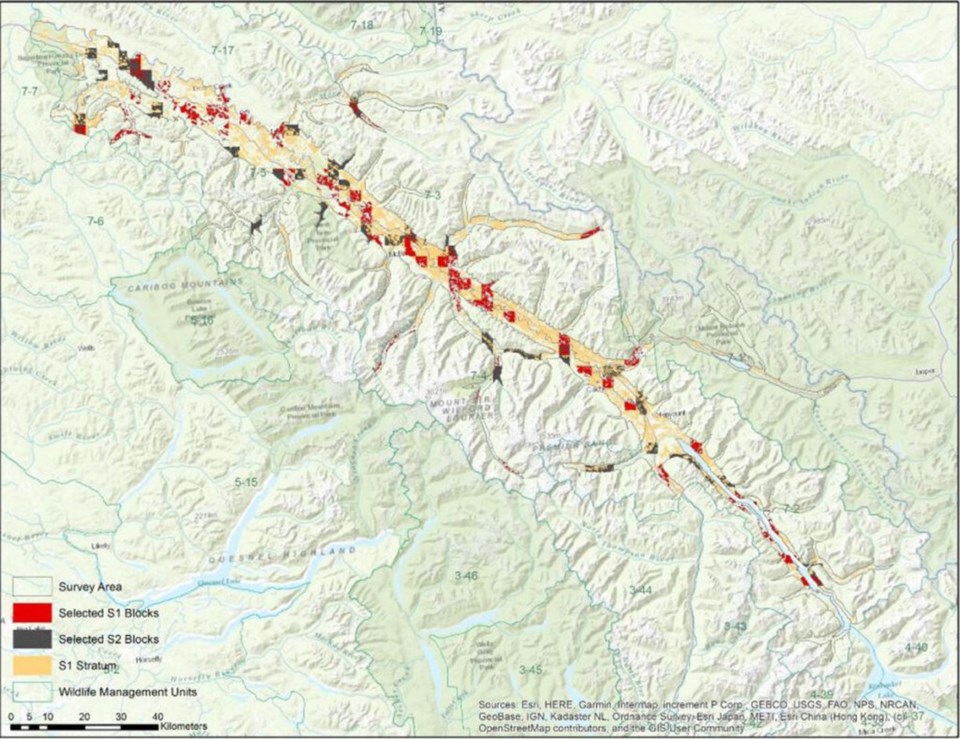Wildlife biologists working with the Ministry of Forests, along with observers from BC Parks and Simpcw First Nation conducted the survey, the main focuses of which were to determine estimates of moose abundance and density, bull to cow and cow to calf ratios, and to get a minimum count of elk and deer in the area.
Areas surveyed include Mount Robson Provincial Park, the Canoe River area of the Kinbasket reservoir south of Valemount to the Fraser River west of McBride. It also included the traditional territory of many First Nations, such as the Lheidli T’enneh Band, Lhtako Dene Nation, Secwepemc te Qelmucw, and Simpcw First Nation.
The Ministry of Land, Water, and Resource Stewardship says the surveys were done by dividing the survey area into different sample areas based on anticipated moose habitat.
“Moose habitat selection in early winter is quite predictable, and spatial habitat layers can be used to classify habitat as either high likelihood of moose (S1) or lower likelihood of moose (S2),” the ministry said.
Using provincial vegetation and silviculture data, researchers determined the two habitat areas, with S1 areas having five to 40-year-old forests made up of mainly deciduous trees with areas of shrubs.
S2, or low value moose habitat areas, includes primarily less than 40-year-old forests primarily made up of coniferous trees, as well as other forests between five and 40 years old, muskeg, swamps, and areas without vegetation, like gravel bars, rock outcrops, and roads.
Researchers then randomly selected blocks out of these areas to survey and classified the moose observed in those blocks. The survey itself was done by “well-trained, experienced observers” who flew out in Bell Jet Ranger helicopters with bubble windows for maximum visibility, according to the ministry.
The survey found Robson Valley has a moose density level of 0.32 moose per square kilometer, which researchers said is similar to other mountainous areas in the Omineca region. Researchers observed a total of 258 moose and estimated the survey area to have a population of about 1049. They estimate the valley has about 31 moose calves per 100 cows, which the ministry says is consistent for a stable moose population, adding these ratios can fluctuate each year.
“Calf cow ratios were in line with what we would expect for a stable population, although these ratios can be highly variable year-to-year, and thus are interpreted with caution by wildlife managers,”
The survey found the bull to cow ratio in the area is at about 98 males per 100 females — almost double the target of 50 bulls per 100 cows in low density areas. This ratio was much higher in Mount Robson Provincial Park, at 250 males per 100 females.
The study says these ratios suggest current limited entry hunting harvest rates in the valley are sustainable.
The Province says it won’t revise hunting regulations based on this survey as it is meant to give “a snapshot in time” of the moose population.
“We are placing more emphasis on monitoring trends, like bull ratios, calf ratios, or repeated surveys on densities. We intend to continue monitoring the Robson Valley,” the ministry said.
The ministry plans on conducting another, similar survey of the area in 2027, depending on its resources and staff capacity.




